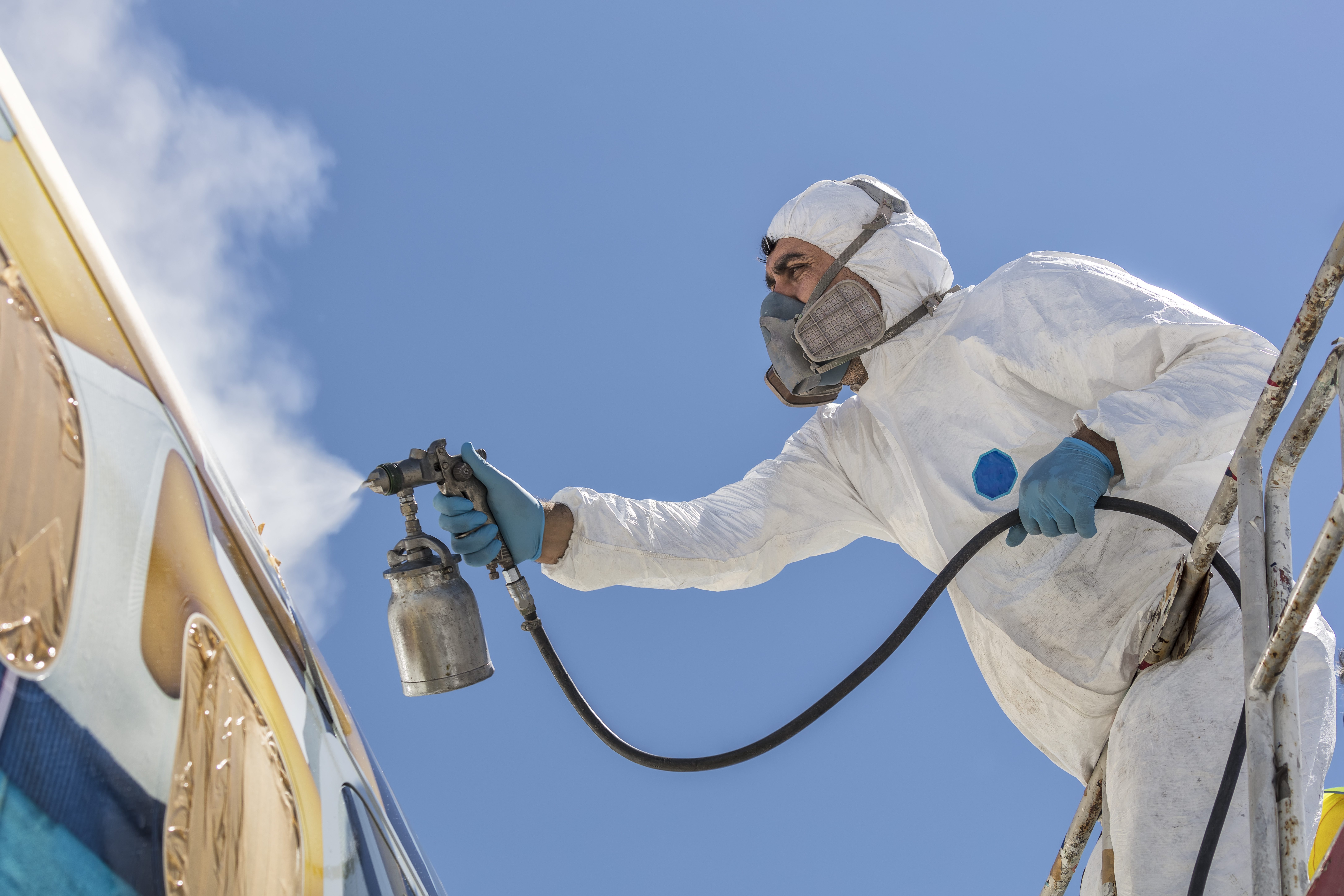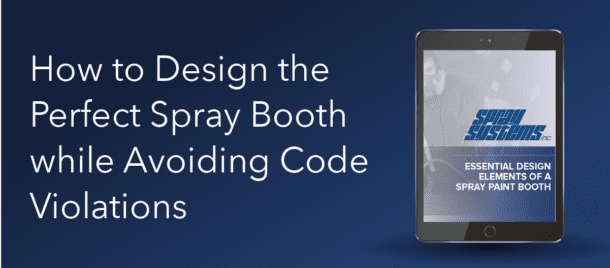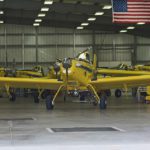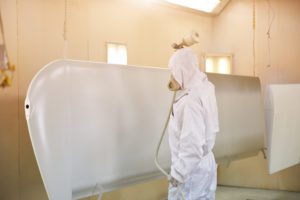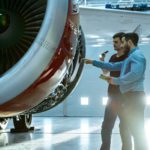Read Time: 3m44s
Summary:
- There are three different paint application methods in the aerospace industry: spraying, dipping and brushing
- Spraying has the highest quality finish but has more stringent requirements to maintain that quality
- Dipping does not provide a high-quality finish and is often used for fully coating parts and for priming.
- Brushing is often used for smaller, more precise areas that are harder to reach and for cleaning up after repairs
Applying paint to aircraft components not only adds a decorative touch to the part, but also a functional anti-corrosion coating. Protecting aluminum and other aircraft materials from the elements requires that almost every part be coated with a protective finish. However, each part has different finishing requirements. Components in the wing, which are exposed to the elements, may require an anti-corrosion coating but no decorative finish. Aircraft exterior paint can be either decorative, such as the operator’s markings on the tail, or a protective finish.
Due to the sheer amount of paint used for aerospace components, aircraft manufacturers tend to optimize the painting process by pairing each component with an effective and efficient paint application method.
Common aerospace paint application methods include:
- Spraying
- Dipping
- Brushing
Learn about each paint application method and the corresponding components that can be finished with each variation. Factors such as component size, required quality of finish and ability to access the area should all be taken into consideration.
Spraying
Spray applications use an atomized cloud, or spray, of the finishing material and compressed air to evenly coat surfaces. The spray application method has the highest quality finish of the three options discussed in this article. However, to maintain the high quality finish, spray applications have more stringent requirements. Water-based paints cannot be contaminated by oil or by other debris and filters are required to collect any debris within the painting environment. To adhere to these requirements, spraying is often completed in a spray paint booth where the environment can be controlled for the proper humidity and air cleanliness levels.
While the other two options—dipping and brushing—can also be used for large components, spray is often the most effective. Spray paint booths can be designed to accommodate large parts. Dipping tanks, while they can also be large, are generally not a good fit for high-quality finishes for reasons discussed in the following section. Brushing is also not typically an effective choice for coating large areas. A large spray paint booth can also provide a high quality decorative finish to aircraft exteriors.
As a general rule, spray application is recommended for:
- High quality finishes
- Large components
Dipping
Often used for primers, the dipping method completely submerges a component in a tank. This method is effective for fully coating aerospace parts, which makes it a good choice for protective coatings. The full immersion technique ensures that all areas are coated; however, this technique does not typically provide a high quality finish as drips are possible when the parts are hung to dry.
The dipping method requires a large tank to fully immerse parts, which makes it a poor choice for finishing larger aircraft components as the size of the tank becomes cost prohibitive. Dipping is most often used in factories and at large repair stations.
In general, dipping is best suited for:
- Small components
- Protective coatings
Brushing
The brushing method uses a paintbrush to apply paint to a component. A key factor in successful brushing application is the consistency of the paint—thick paints might pull and rope under the brush while thin paints might not adequately cover the intended surface. Without the proper consistency, it is likely that brush marks will remain after the painting is completed. Due to the risk of a lower-quality finish, brushing is not typically used for decorative finishes.
A common use of brushing is to cover areas after repairs. The small area is probably not worth spraying again and dipping would not be effective for an assembled component. Brushing is also effective for painting hard-to-reach places. Unlike spraying and dipping, which generally require large equipment such as spray guns or tanks, the brushing application only uses a small paintbrush.
In summary, appropriate applications for brushing include:
- Repairs
- Hard-to-reach areas
Utilizing the appropriate paint application method facilitates both corrosion control and high quality finishes where required. Small components that require a protective coating are often dipped; however, larger components and decorative markings benefit from a high quality spray application. It may make sense to dip exposed components, like landing gear components, but the operator’s marking on the tail are likely to be sprayed for a high quality finish.
Each paint application method has its role in the aircraft manufacturing, assembly and maintenance processes. However, there is no substitute for the high quality finish of a spray application. Cntact Spray Systems to provide a custom spray paint booth solution that’ll give your parts the high quality finish you desire, while ensuring compliance with all government regulations. Don’t just trust your application method, trust your booth, too.
